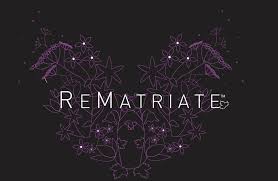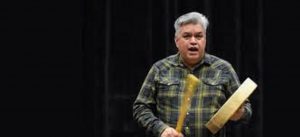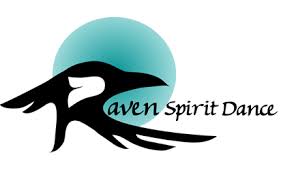Introduction
In June 2018, Vancouver Native Housing Society proposed a series of engagements through the Creative City Strategy “Host Your Own Engagement” initiative. The objective of this project is to gather Indigenous arts and culture community leaders from the cross-section of Contemporary arts that are created and produced in the City of Vancouver to uncover the best practises for collaborations with policymakers.
Interactive sessions led by professional Indigenous artists provided participants with the opportunity to engage in round-table discussions and hands-on experiences of Indigenous arts and cultural practises. Participants varied from session to session and included a cross-section of artists; representatives of artist collectives, arts service organizations, educational institutions, non-profit organizations, professors, instructors, scholars, students, young families and youth.
Ideas generated through the creative brainstorming and critical thinking explorations are documented in the short documentary film directed by Olivia Davies and produced by WHAEA Productions: “It Takes A Village – Sustainable Collaborations with Policy Makers and Indigenous Artists.”
The conversations held within each session seek to draw out the key ingredients to successful collaborations; identify the barriers to equity and access that are experienced by Indigenous artists living in Vancouver, cite examples of policies that have supported Indigenous arts and cultural practises, define the values that uphold organizational capacity in order to move forward with strategic emphasis on truth and reconciliation, and forecast future opportunities for sustainable growth in this sector.
Engagement Questions
- Name 2-3 structures currently in place that support you to continue your practise. (ex. Funding resources, space resources, community networks, etc.)
- What are specific access barriers you have encountered when planning or delivering an arts & culture project in your community? Name 2-3 ways you would like to see your practise be better supported.
- Have you encountered sustainable growth in your field of practise by artists in places outside of Vancouver? Name 2-3 examples that you would like to see imitated.
- Imagine the city working in collaboration with you to achieve your artistic career goals. Name their role. Name their responsibilities. Detail the level of engagement you desire for your collaboration to be a success. What is the ideal outcome of such a collaboration and how does this perspective shift when the level of engagement of either party changes?
Project Description
Vancouver Native Housing Society was awarded $13, 000 by the City of Vancouver’s Creative City Strategy to undertake engagements with the Indigenous performing arts communities based in Vancouver from June 2018 – October 2018. Vancouver Native Housing Society is a leader in providing safe, affordable housing for the urban Indigenous population of Vancouver. We see the value Indigenous artists make in contributing to a vibrant, healthy community. This idea is translated through the Artists in Residence program at Skwachàys Lodge. Artists from across the nation choose to bring their expertise and talents to the city of Vancouver so
that they may build their careers and garner support for their artistic projects by engaging in the city-wide efforts that support Indigenous art.
These engagements were curated by the project lead, Olivia Davies, current program manager of Skwachàys Lodge Artists in Residence and Artistic Director of O.Dela Arts Society. Lead artists were chosen from within the Urban Indigenous arts community and included Rematriate Collective members, Ts?m? Igharas and Denver Lynxlegs; Coast Salish musician and curator, Russell Wallace; Raven Spirit Dance artistic director, Michelle Olson alongside Squamish Nation Elder, Bob Baker; and Full Circle First Nations Performance artistic director, Margo Kane alongside Squamish Nation Elder, Dennis Joseph. Each lead artist was asked to include specific engagement questions within the context of their workshop and help facilitate a conversation around these questions with participants. All workshops were filmed by WHAEA Productions, Tia Taurere-Clearsky and recorded by Gillian Thomson.
Engagement Summary
Connecting with community can take many different forms. For the purpose of this project, four engagements were produced, ranging from experiential workshops where skills exchanges occurred through hands-on learning provided by knowledgeable artists, to facilitated brainstorming that requires participants to engage their imaginations in formulating solutions to puzzles and capturing these ideas to share with the larger group, to the smaller, more informal gathering of those artists affected by policies which have enhanced and/or inhibited their creativity while placing a requirement on those individuals to be the voice of change and provide all the labour without being given fair share of the rewards.
Collaboration can be messy. This is why agreed-upon documentation by all parties is required in order to address requirements for appropriate protocol and best practises that will ensure the success of the project. There is no “one-size-fits-all” approach. Each situation will require a nuanced approach by policy makers and Indigenous artists to prevent fatal outcomes of cultural appropriation, inappropriate use of Indigenous intellectual property and image, and other forms of disrespect.
Thorough consideration of individual needs and overall outcomes can enhance the ways in which collaboration can be meaningful and enriching for all involved. It is often found that an additional amount of responsibility is shouldered by Indigenous artists to give their time, energy, and expertise to projects that are labelled collaborative by non-Indigenous partners. This may result from inefficient use of time and resources by non-Indigenous partners to build trust and foster relationship prior to collaboration. Indigenous artists who have the met the needs of the organization in the past may not be the right individuals for the next collaboration and vice-versa. Pan-Indian approaches will not work. Cultural inclusion policies must be reviewed regularly by independent committees who are made up of Indigenous voices.
Addressing the national truth and reconciliation mandate by putting forth the action of engaging Indigenous artists in strategic plans and other written material must be followed by meaningful actions taken by organizations. For one group, this may require new policies be written that inform strategic planning and shift the mandate of the organization. Another group may need to bring on an Indigenous consultant to assist with re-mapping of the organizational structure in order to better serve their community with a focus on equity and access. Dynamic shifts at the board level to include individuals who can promote these value statements across the organization and ensure that actions are taken reflect that the new systems in place.
Concrete recommendations from our research cite how affordable space is needed now for Indigenous artists and art collectives to gather and host workshops, events, and performances. Re-purposing under-utilized spaces is one solution to this puzzle. Strong emphasis must be placed on how the city can facilitate and/or co-produce intergenerational experiences that are low-no cost and are led by Indigenous artists. Organizations and educational institutions seeking Indigenous alliances are encouraged to develop relationships that are mutually beneficial and not only transactional in nature.
This project allowed many voices to come together to inform the Creative City Strategy. Participating groups played an active role in the process of shaping future civic investments and garnering support for Vancouver’s Indigenous arts and culture sector. This project was successful in its objective to source the ideas and specific actions put forward by the communities involved that will have significant impact on the cultural ecology of Vancouver.
The Indigenous cultural and artistic renaissance occurring now has the potential to shape the future of Vancouver by shifting towards meaningful engagement and ethical inclusion. Truth and reconciliation values must be implemented at every level within an organization and must be considered integral to the positive outcome of every collaboration. In order to move forward together, policy makers and Indigenous artists share the responsibility of determining the parameters for collaboration that will promote mutual respect, transparency, and relational trust from start to end.
Engagement Statistics
Date
June 9, 2018
July 23, 2018
August 22, 2018
October 23, 2018
Total
Location
Skwachàys Lodge (VNHS)
Djavad Mowafaghian World Art Centre (SFU)
Kwayatsut (VNHS)
Skwachàys Lodge (VNHS)
—
Adult Participants
16 + 2 Facilitators
15 + 1 Facilitator
14 + 2 Facilitators
6 + 1 Facilitator
50 Participants
Engagement Analysis
Engagement 1: Rematriate Collective – June 9, 2018 (2-hour workshop)

Title: Listen, Learn, and Create
Participants: 16 Adult-Age Participants including 3 children under 16 years old
Host: Tsema Igharas and Denver Lynxlegs / Skwachàys Lodge
The Rematriate Collective seeks to spread a positive message to Indigenous women and stands up against cultural appropriation. In this hands-on workshop, participants were invited to learn basic beading techniques and stitch beads onto a Rematriate patch to take home with them. In the spirit of relation through citation, the workshop leaders explain that this format is modelled off Melissa Myers “Bead and Read” workshop, where participants are asked to listen with their hands, and their ears and acknowledge the importance of learning from one another. Throughout the workshop, audio recordings by collective Rematriate Collective members were played at a low level and included pieces that touched on intersectional feminism and Indigenous women’s rights. The vibe in the room was peaceful, chatty, focused, and grounded. The workshop was rooted in tradition and feminist concepts while embracing contemporary ways of being and gathering.
Below is a collection of responses to the engagement questions:
- Indigenous artists and collectives are required to come up with their own structures and seek out different ways of approaching their practise to adapt to barriers. Small workspaces result in small works created. Targeted marketing strategies ensure the
right people know about an event and tell their friends who will also attend. - In-Kind donations of expertise, energy, and resources help fund projects and build support systems and create community.
- Traditional arts like beading have the power to heal emotions and psychological duress. Often, beading circles are made up of participants from different nations and can be a safe space of welcoming and connection.
- Artists recognize the efforts made by the City of Vancouver to put calls out to Indigenous artists and theme events with Indigenous focus.
- Critical discourse happened around the onus put on Indigenous artists to do land acknowledgements, to educate Non-Indigenous people about traditions and protocol, and to mitigate emotions that can surface when the topic of reconciliation is brought up.
Engagement 2: Russell Wallace – July 23, 2018 (2-hour workshop)

Title: Coast Salish Singing and Drumming with Russell Wallace
Participants: 13 Adult-Age Participants including 3 children under 16 years old
Host: Russell Wallace / SFU Office of Community Engagement
Venue: Djavad Mowafaghian World Art Centre (SFU), Goldcorp Centre for the Arts
Russell Wallace is a composer, curator, musician, and educator originally from Lil’Wat Nation. In this engagement, Russell shared social songs, drumming, and dances passed down to him through his matrilineal heritage. Specific cultural knowledge and protocol was described throughout the workshop so participants learning the songs and dances could understand their place in history and the current day. In order to learn Salish language and vocables, one must do so in person, face to face with their teacher, and not from recordings. This is an important point in understanding how the question of cultural appropriation can come from laziness in the learning process. The group was divided into smaller sections so that participants could experience singing in harmony with one another.
Below is a collection of responses to the engagement questions:
- We would like to see more all-ages workshops (like this one) that support inter-generational learning and passing down of cultural knowledge to the next generation.
- Being able to conduct workshops on the land (outside, site-specific venues, open-air venues) gives grounding and shifts the perspective of the participant to better understand our relationship to nature.
- Barriers to accessing workshops include the actual and peripheral costs to attending – childcare, transportation, loss of wages for time spent in workshop are described as peripheral costs.
- Marketing of events must be diverse and seek to include high-barrier members of the community who may not have access to social media – posters and handbills at the Carnegie Centre, VPL, and other community gathering places help promote the events to other organizations whose vision is aligned with the vision of the event producers.
- Providing subsidized access to under-utilized spaces (like the PNE fairgrounds and surrounding building) pop-up markets, workshops, events, and performances that are hosted by Indigenous groups and individuals can help promote sustainability and increased visibility to the wider public.
Engagement 3: Raven Spirit Dance – August 22, 2018 (2-hour facilitated conversation)

Title: Facilitated Discussion with Raven Spirit Dance
Participants: 13 Adult-Age Participants Representing (8) Arts Service Organizations
Hosts: Michelle Olson and Elder Bob Baker
Venue: Kwayatsut, Vancouver Native Housing Society
Raven Spirit Dance is a Vancouver-based non-profit arts organization that creates, produces, and presents Contemporary Indigenous dance. Artistic Director, Michelle Olson and Squamish Elder, Bob Baker hosted this engagement with members of Vancouver’s
arts service organizations including representatives from Arts Starts, BC Arts Council, CADA/WEST Canadian Alliance of Dance Artists, Made In BC, Modus Operandi, Vancouver Parks Board, SFU Office of Community Engagement, and SFU Dance Program.
The conversation was directed around the following specific questions:
- How is your organization engaged in Indigenous dance and culture?
- What do you hope to do?
- Is there anything in your strategic plan?
- What are the obstacles/puzzles you encounter?
Following a traditional welcome song by Elder Bob Baker, Michelle invited a round of introductions. Responses to these engagement questions were delivered by small groups onto larger sheets of paper that were then shared back to the larger group within the timeframe of the workshop. It is important to note that this event was by invitation only and the select few who attended were invited to provide responses from the perspective of their organizations. Anecdotal sharing was
limited. Specific examples of organizational actions and future goals were encouraged.
Below are highlights from the responses:
- Building internal and external relationships needs to be the focus. A value shift is required where truth and reconciliation are the foundation for new and existing relationships.
Organizations have the power to link artists together and be innovative. - Increasing the invitation is important. Normalizing Indigenous artists and practise is something that still needs to happen with more frequency. Beneficial invitation is required. Partnerships need to be reciprocal.
- We are still defining the term decolonization. We need to do the work of deconstructing language around ways of talking about Indigenous dance. Traditional VS Contemporary and the training modalities that go into becoming a professional in the field.
- The onus of reconciliation work is not on Indigenous partners.
- Post-secondary training is a high barrier to many Indigenous youths. Education subsidies are needed and increased outreach to remote and rural communities must happen.
- A three-year Indigenous Dance Program is needed to train professional dance artists.
- Indigenous artists are the conduit to having their culture continue.
- Attend the annual Coastal First Nations Dance Festival (!)
- Be willing to make mistakes. Ask questions.
Engagement 4: Full Circle: First Nations Performance – October 23, 2018 (2-hour facilitated conversation)
Title: Facilitated Discussion with Full Circle First Nations Performance
Participants: 6 Adult-Age Participants and 1 Facilitator
Host: Margo Kane
Venue: Skwachàys Lodge, Vancouver Native Housing Society
Full Circle: First Nations Performance creates opportunities for Indigenous artists. The company produces the annual Talking Stick Festival and provides professional development opportunities for the Full Circle: First Nations Performance Ensemble. The engagement was by invite-only and included a small group of prominent members of the Contemporary Indigenous arts and culture community. The event opened with a Traditional Song and Prayer by Anishnaabe Elder, Sharon Jinkerson-Brass. A round of introductions was followed by a talking circle format of sharing and discussion around the topic of barriers, support structures, and healthy collaboration practises.
The following is a collection of responses captured during this event:
- We are self-defining the ways we talk about ourselves, our work, and our needs.
- Indigenous artists must be respected for their consultation efforts at every step.
- Indigenous intellectual property must be properly acknowledged and credited.
- Examples found in Australia and New Zealand are providing road maps to navigate the territory of best practises in accreditation of sources and decolonizing processes.
- Consideration of distinct cultural practises prevents Pan-Indianism from occurring.
- City council needs to hire more Indigenous staff members and increase the visibility of Indigenous Staff at all levels and in all divisions.
- Policy recommendations put forward by Indigenous committees need to be fast-tracked into actions.
- We have a vibrant arts and culture community of Indigenous artists within the City of Vancouver and the progress made by the previous government to promote our work must continue.
- Mainstream producers and promoters need to build trust with Indigenous artists and educate themselves on what healthy collaborations look like to avoid damaging relationships.
- Changes in policies in the arts and culture sector need to happen so we can stop working within colonial structures that minimize our voices. Cultural sensitivity training is required across the sectors.
